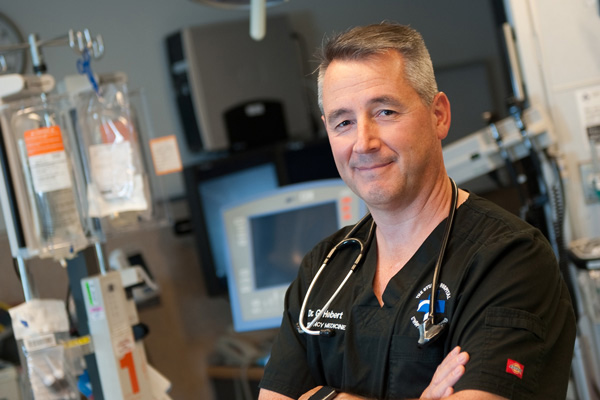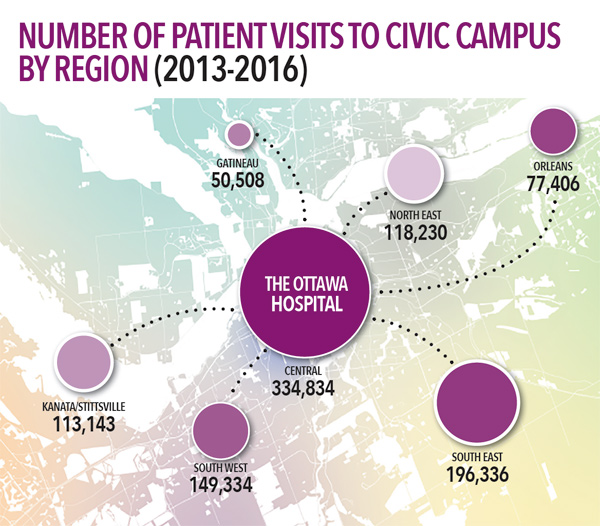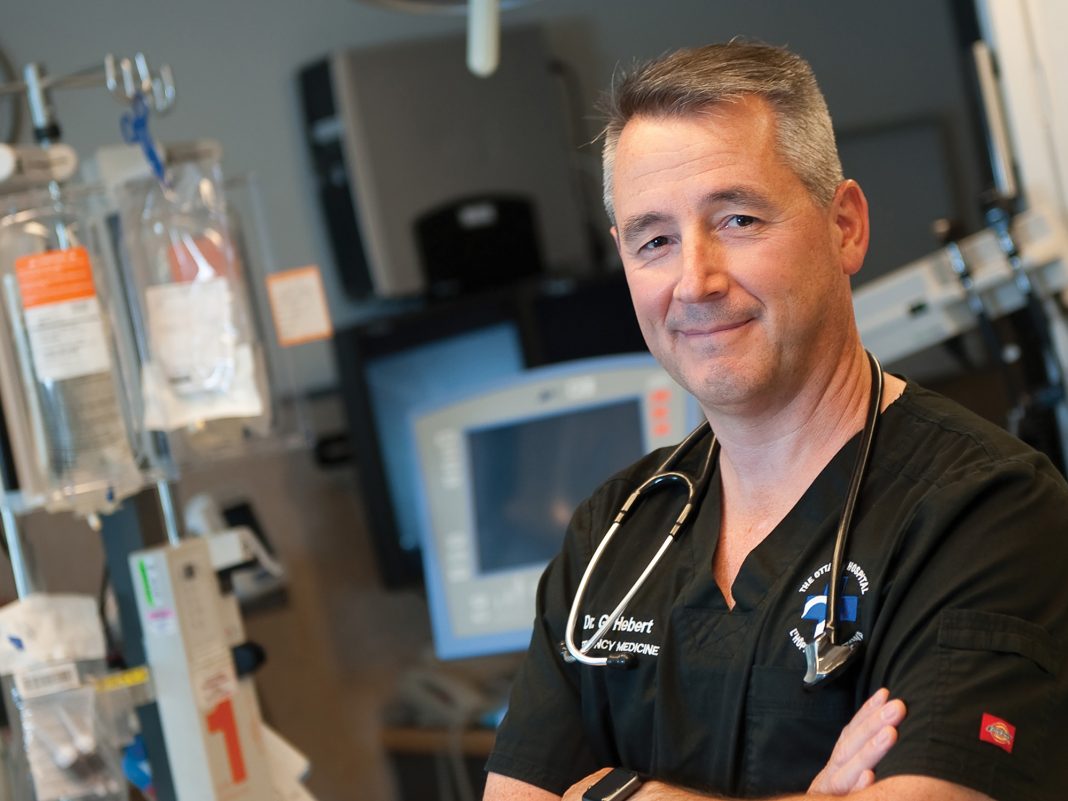Dr. Guy J. Hébert, Head of the Department of Emergency Medicine at The Ottawa Hospital (TOH), hesitates when he describes himself and his fellow emergency department medical staff as “adrenaline junkies.” It’s best to describe them as professionals who thrive on highly organized chaos.
“Emergency medicine has a lot of excitement to it, a lot of adrenaline. It’s very challenging medicine,” says Dr. Hébert. “We see the sickest of the sick – along with all our colleagues at The Ottawa Hospital – but we do see it all here in Emergency Medicine.”
Originally from New Brunswick, Dr. Hébert describes himself as “a Maritimer at heart.” His family moved to Ottawa when he was 12. He did his undergraduate studies in Ottawa and attended medical school here as well.
“I love acute care medicine,” says Dr. Hébert. “I love the challenge of diagnosis, the challenge of being the first intervener… being the first person to actually get in there and treat the patient.”

As the only trauma centre in Eastern Ontario, an average of 222 patients come through the emergency department every day at TOH Civic campus – 238 patients at the General. That adds up to almost 170,000 patients annually. Issues range from sprained ankles to the most serious kinds of trauma and illness, including some of the most severely ill patients in the region.
Dr. Hébert is an expert in a broad spectrum of trauma and illness but he’s quick to point out that it’s a team effort at TOH. Having the ability to draw upon specialized expertise, including research, he says, is what sets TOH apart from other hospitals.
If there’s a health-related emergency, the best place to be is at The Ottawa Hospital, especially when minutes count.
One area of emergency medicine that’s seen advances, is how hospitals manage strokes. A stroke occurs when blood flow to the brain is obstructed. If brain cells are deprived of oxygen they begin to die, and if too much time goes by, patients can lose memory and muscle control.
If paramedics pick up a patient suffering from a stroke they bypass the regional hospitals – whether the patient is in Orleans or Kanata – and go directly to The Ottawa Hospital where a team of medical staff is quickly assembled. Once admitted, the patient falls under the care of specialists and nurses with exceptional skillsets.
According to Dr. Hébert, the Civic campus has the greatest number of “time critical specialties.” There’s also the Regional Trauma Centre and the Stroke Centre where all of the traumas and strokes in the region are diverted.

Improvements in patient care are happening every day at TOH, and as an academic facility, it’s home to some of the most pre-eminent researchers in Canada.
“The emergency medicine research program here in Ottawa, lead by Doctors Stiell, Perry, Vaillancourt, Thiruganasambandamoorthy, these are our researchers. Together, they are the most prolific, emergency medicine research group in Canada,” says Dr. Hébert.
Their research often results in new guidelines and new treatment. Dr. Stiell, for example, has been conducting research into atrial fibrillation (irregular heartbeat, which some patients present with in the emergency department), and whether it’s better to treat with medication or to reset the heart electrically to start it back in a normal rhythm. It’s a made-in-Ottawa approach that leads to shorter lengths of stay in emergency, fewer hospital admissions, and a quicker return to regular routines for patients. It’s practice-changing research, and it’s improving patient lives every day.
Whether it’s a stroke, trauma or illness, today, entire teams are mobilized, there are specialists on call, and research advances are improving patient care and outcomes. What has remained constant over time however, is the very nature of the emergency department: they see the sickest of the sick, people in their times of greatest need.
“We’re here 24 hours a day, 365 days a year. Our mission is to care for the patients the best way that we can… And I think that we do, every single day,” says Dr. Hébert. “We are proud to be the safety net for the community.”
